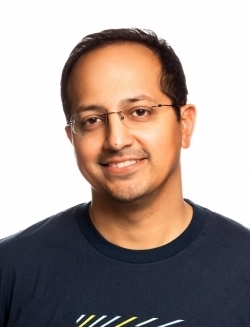Conference Interviews
Conference interview: Dr Anurag Ganguli, VP of R&D, Plus
Plus
 Ahead of the conference in San Jose, Dr Anurag Ganguli, VP of R&D at Plus, delves into the top three developments in ADAS/AD technologies that he expects to see in the next five years, the three main obstacles he believes lie in the road to full deployment and more.
Ahead of the conference in San Jose, Dr Anurag Ganguli, VP of R&D at Plus, delves into the top three developments in ADAS/AD technologies that he expects to see in the next five years, the three main obstacles he believes lie in the road to full deployment and more.
Don’t miss Dr Ganguli’s presentation on ‘applying modern AI to advanced autonomous driving’ during the ‘Key issues, strategies and innovations and their implications for safe AD/ADAS development and deployment’ conference session on Day 1.
1. What are the top three developments in ADAS/AD technologies you expect to see in the next five years?
Large AI models will continue to evolve, enabling vehicles to make more complex decisions in real-world scenarios. Furthermore, ADAS features will become more popular and will be installed as standard in more vehicles, and series production of autonomous vehicles like autonomous trucks will begin.
2. When do you expect to see full autonomy on US roads? When should we expect commercialization of AV technologies at scale?
The path to full autonomy on US roads is progressing but it’s a complex journey. We’re already seeing driverless robotaxis operate in certain areas. However, widespread deployment of fully autonomous vehicles across diverse environments is still some years away.
There are currently no fully autonomous trucks commercially available for purchase or widely deployed across the country. We expect fully autonomous trucks to be on the road in the next several years. As we continue to work with our partners, including Scania/Man/Navistar of the Traton Group, Hyundai Motor Company and Iveco to accelerate the commercialization of our Level 4 autonomous driving technology, the exact timing will depend on regulations, technology and customer readiness.
That said, we at Plus have a unique commercialization approach where we have applied our AI model-based Level 4 autonomous driving software to different solutions and use cases that cover all levels of autonomy. These solutions are being integrated into next-gen safety systems, as well as driver-assist features and fully autonomous vehicles.
3. What are the main three obstacles in the road to full deployment? How can they be overcome?
A key challenge is the safe handling of edge cases. Conventional rule-based approaches are insufficient. To address these cases, we must develop systems that can emulate the nuanced decision making of human drivers while also possessing the ability to adapt to new and unforeseen circumstances. That’s why we use large-scale AI models capable of processing vast amounts of data, which underlies our end-to-end system that has the ability to reason.
A national framework is needed to address the patchwork of radically different regulations that exist from state to state. Different states have varying regulations and standards for autonomous vehicles, making deployment complicated. We are actively collaborating with regulators, industry peers and various stakeholders to develop unified legislation to support the safe operation and deployment of autonomous vehicles in the US.
Building public trust in the safety and reliability of AVs is crucial for widespread adoption. This takes time and data. That’s why we believe our progressive approach of commercializing our self-driving technology today in driver-in solutions and using those driver-in applications and deployments to accumulate data
and real-world miles is critically important to demonstrate the capability, maturity and reliability of our self-driving technology, before removing the driver from the vehicle.
4. What are you speaking about in San Jose and what three messages would you like your audience to take away?
I will be speaking on applying modern AI to advanced autonomous driving. I’m hoping the audience will benefit from diving into the application of the latest AI models in developing autonomous driving technology; discussing the transformative impacts of modern AI in building more robust and adaptive AD systems; and sharing Plus’s real-world commercialization experience across the US, Europe and Australia.
Join Dr Ganguli’s presentation on August 28 to find out more.
